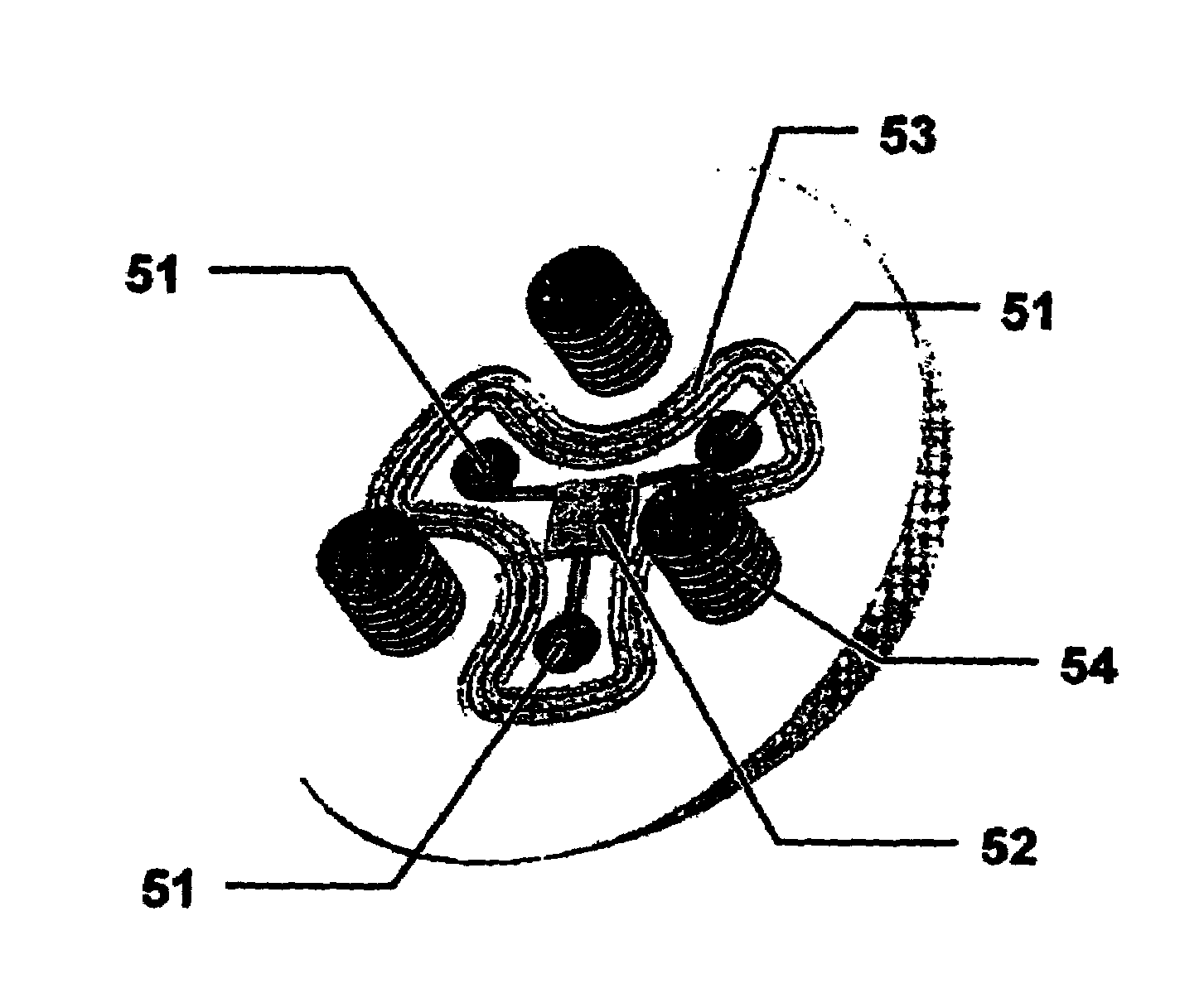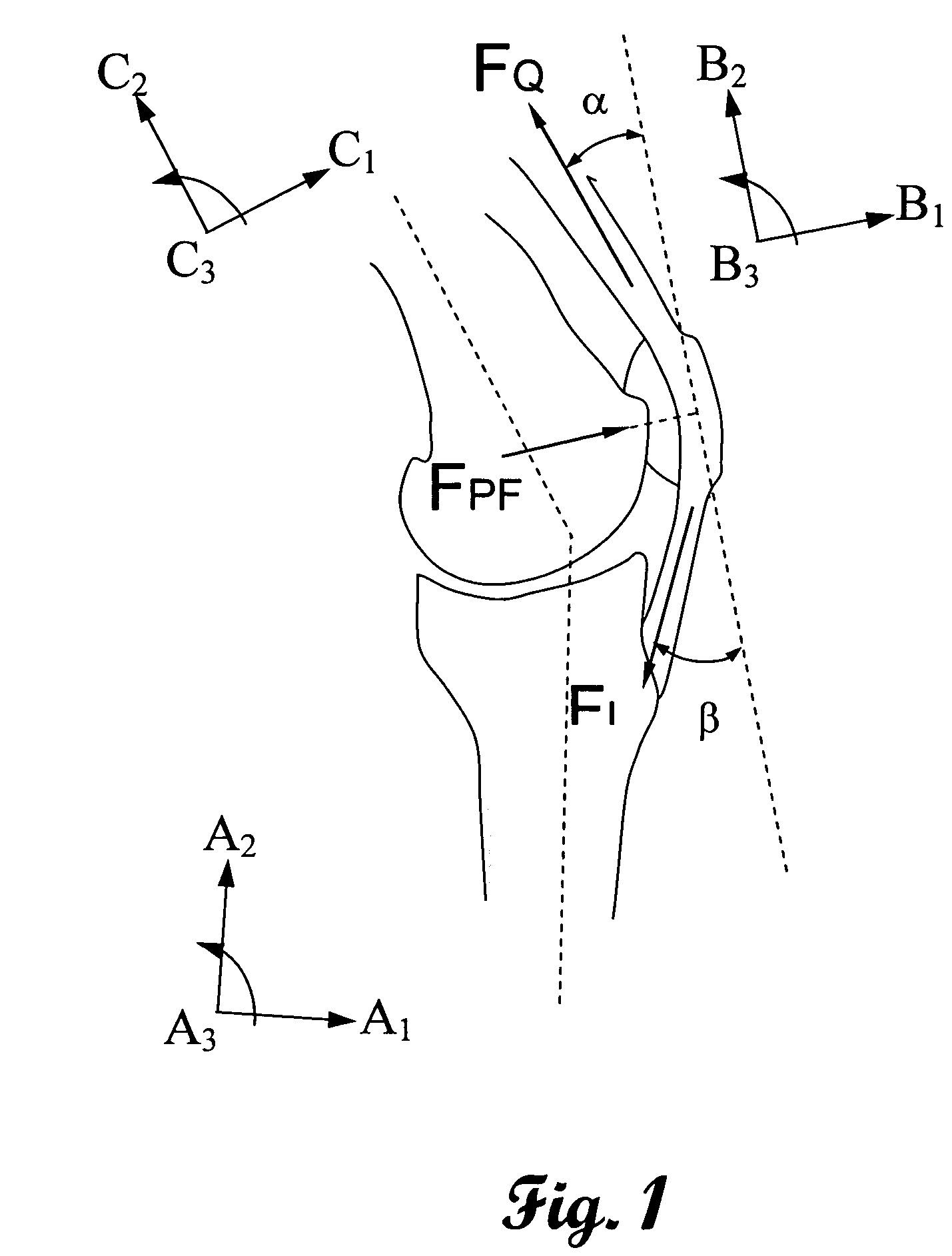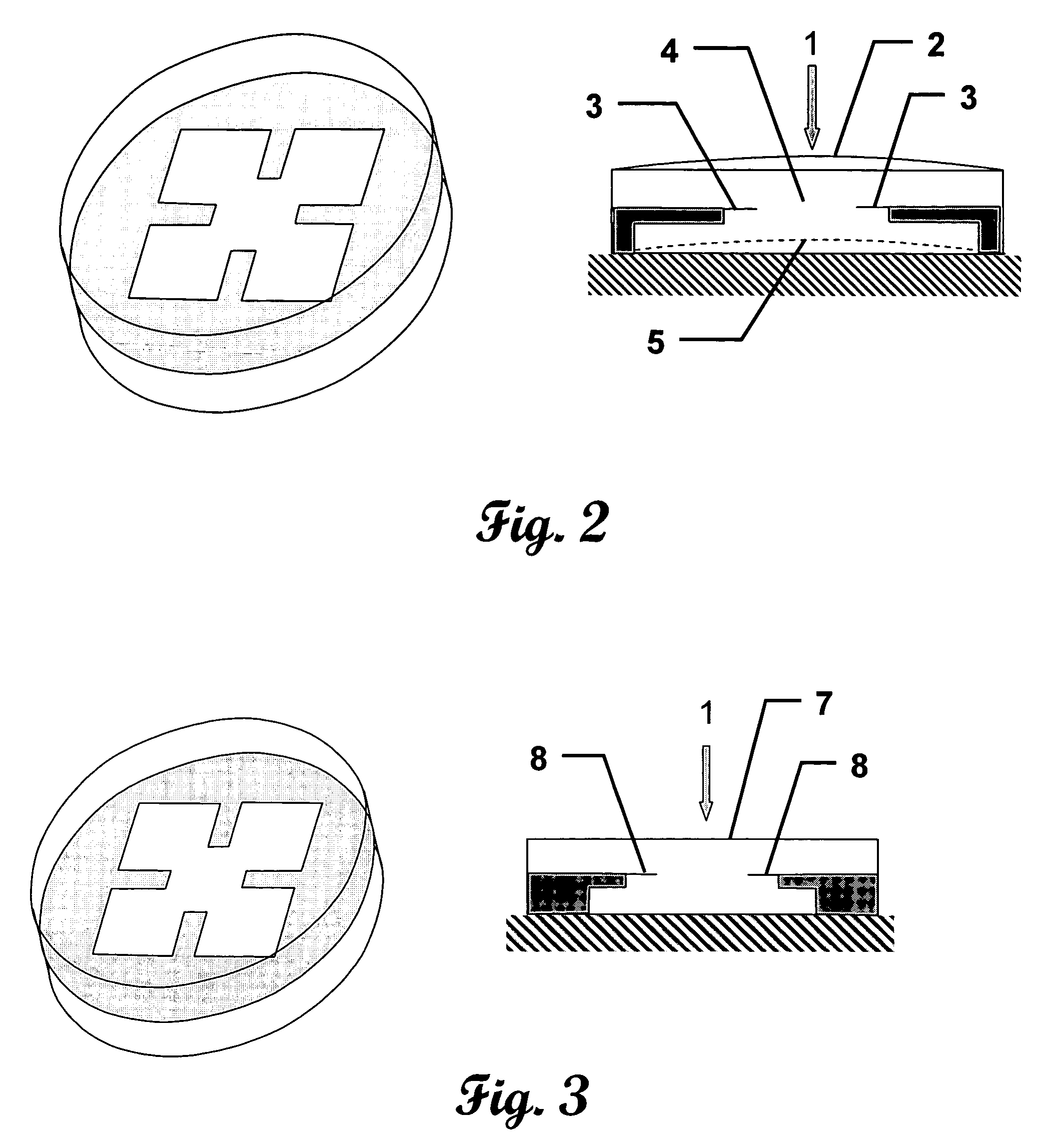In-vivo orthopedic implant diagnostic device for sensing load, wear, and infection
a diagnostic device and orthopedic technology, applied in the direction of prosthesis, catheter, shoulder joints, etc., can solve the problems of limited amount of data available using instrumented implants, reliability of modeling data, and inability to in vivo measure load conditions, so as to improve the kinematics of joints and improve the reliability of implants
- Summary
- Abstract
- Description
- Claims
- Application Information
AI Technical Summary
Benefits of technology
Problems solved by technology
Method used
Image
Examples
Embodiment Construction
[0048]This invention measures the forces and pressures existing between the human body or limb and prosthetic implants. A further advantage is to measure the patellofemoral bearing surface forces including forces in the coronal and saggital planes of the limb. Another advantage of this invention is to measure the wear in orthopedic prosthesis. A further advantage of this invention is to measure indicators of infection in orthopedic implants. Yet another advantage of this invention is to measure the vibration characteristics of orthopedic implants. Another advantage of this invention is to measure frictional heating in orthopedic implants. The advantages of this invention are accomplished by the novel application of micromachined cantilever or “simply-supported” beams. These beams have been shown to provide response to each of the previously mentioned advantages. Microcantilever beams are uniquely applicable to these measurement scenarios due to their small size, ease of determining ...
PUM
 Login to View More
Login to View More Abstract
Description
Claims
Application Information
 Login to View More
Login to View More - R&D
- Intellectual Property
- Life Sciences
- Materials
- Tech Scout
- Unparalleled Data Quality
- Higher Quality Content
- 60% Fewer Hallucinations
Browse by: Latest US Patents, China's latest patents, Technical Efficacy Thesaurus, Application Domain, Technology Topic, Popular Technical Reports.
© 2025 PatSnap. All rights reserved.Legal|Privacy policy|Modern Slavery Act Transparency Statement|Sitemap|About US| Contact US: help@patsnap.com



